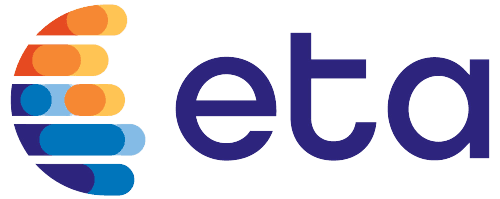Did you know that 80 percent of organizations were victims of payments fraud attacks and attempts in 2023, and 30 percent were unable to recover lost costs? As businesses increasingly adopt electronic checks as a form of payment for their convenience and efficiency, including those with high risk merchant accounts, fraudsters are finding new ways to exploit these digital transactions.
In this article, we'll take an in-depth look at how eCheck fraud occurs, which businesses are most at risk, and what you can do to protect your business. You'll learn:
- What eChecks are and how they work
- Why eChecks have fewer security measures than other payment options
- The most common types of eCheck fraud schemes
- Simple steps you can implement to mitigate the risk of fraud
- How to respond if you suspect fraudulent activity
Many businesses have already felt the impact of eCheck fraud. Keep reading to arm yourself with the knowledge and tools you need to keep your business safe.
What are eChecks?
An eCheck, or electronic check, is a digital version of a traditional paper check. Instead of writing out a physical check, the payer authorizes an electronic transfer of funds from their bank account to the payee's account. This transaction is processed through the Automated Clearing House (ACH) network, the same system used for direct deposit, wire transfers and other electronic payments.
The use of eChecks has skyrocketed in recent years, particularly for B2B transactions, recurring purchase, and online payments. According to the National Automated Clearing House Association (NACHA), ACH payment volume grew by 8.7% from 2020 to 2021, increasing by at least 1 billion payments for the 7th year in a row.
Here's a quick overview of how eChecks work:
- Authorization: The payer provides their bank account information, often through an online form, and authorizes the electronic transaction.
- Processing: The payment details are submitted to the ACH network for processing. The payer's bank verifies the account information and checks for sufficient funds.
- Clearing: If the transaction is approved, the ACH network clears the payment and debits the funds from the payer's account.
- Settlement: The funds. minus any applicable processing fees, are then deposited into the payee's bank account, typically within 3-5 business days.
While eChecks offer a convenient, cost-effective alternative to paper checks, the lack of physical signatures and face-to-face interaction makes them more susceptible to fraud.
The Dangers of eCheck Fraud
While eCheck payments offer many benefits, they also come with a higher risk of fraud compared to traditional checks or credit card payments. This is due in part to the use of digital signatures and the relative ease of obtaining someone's banking information.
Fraudsters have several methods for getting their hands on sensitive financial data, including:
- Hacking and data breaches: Cybercriminals can infiltrate a company's network and steal customer banking information.
- Phishing scams: Fraudsters may pose as legitimate businesses or financial institutions to trick individuals into revealing their account details.
- Malware: Hackers can install malicious software on a victim's computer to capture their keystrokes and steal login credentials.
Under the ACH rules, a merchant has limited time to identify and return an unauthorized payment. If the fraudulent transaction isn't caught in time, the merchant may be on the hook for the full amount.
Who is Most at Risk for eCheck Fraud?
While any business that accepts eChecks, including ecommerce merchant account providers, is potentially vulnerable to fraud, certain types of businesses are more likely to be targeted.. Understanding these risk factors can help you assess your own business's exposure and take appropriate precautions.
Small to Mid-Size Businesses
Small and mid-size businesses are often seen as easy targets by fraudsters. These businesses may lack the resources to invest in advanced fraud detection and prevention tools, making it easier for fraudulent transactions to slip through the cracks.
High-Volume Businesses
Businesses that process a high volume of eCheck transactions are also at greater risk. The sheer number of payments makes it more difficult to manually review each transaction for signs of fraud. Fraudsters may attempt to blend in with legitimate customers, making small purchases over an extended period of time to avoid detection.
High-Risk Industries
High-risk industries are more susceptible to eCheck fraud than others. For example, retail businesses and those with travel merchant account services may be targeted for high-value purchases using stolen account information. Hospitality businesses, such as hotels and restaurants, are also vulnerable due to the high volume of remote transactions.
Other Risk Factors
In addition to these broader categories, there are several specific risk factors that can make a business more vulnerable to eCheck fraud, including:
- Lack of secure payment processing protocols
- History of chargebacks or disputed transactions
- Failure to regularly reconcile accounts and monitor for suspicious activity
- Inadequate employee training on identifying and handling fraudulent payments
If your business falls into one or more of these high-risk categories, it's essential to be proactive in implementing fraud prevention measures. In the next section, we'll explore some strategies you can use to protect your business from eCheck fraud.
Strategies to Mitigate eCheck Fraud
While no business is immune to the risks of eCheck fraud, there are several proactive steps you can take to avoid potential fraud attempts before they result in losses.
Secure Your Payment Processes
One of the most effective ways for business owners to prevent eCheck fraud is to ensure your payment processes are as secure as possible. This should include using encryption and tokenization to protect sensitive account data, implementing multi-factor authentication, and regularly updating payment software and security protocols.
Monitor Accounts Closely
Vigilant monitoring of online transactions is key to identifying and preventing eCheck fraud. Best practices include:
- Reconciling accounts daily to catch any discrepancies or unauthorized transactions
- Setting up alerts for suspicious activity, such as payments over a certain threshold
- Reviewing reports for red flags like a sudden increase in eCheck volume or returned checks
- Conducting regular audits to ensure compliance with security standards
Train Your Employees
Your employees are your first line of defense against eCheck fraud. Invest in training to help them recognize the signs of potential fraud, such as missing or inconsistent account information and follow proper procedures for handling and escalating suspicious transactions.
Work with Trusted Partners
Choose your payment processors and financial institutions carefully. Look for partners that utilize advanced fraud detection and prevention tools to screen transactions and protect your business and customers. Plus, aim for partners that provide 24/7 support and dispute resolution assistance.
Combating eCheck Fraud: Your Action Plan
Even with robust prevention measures in place, there's still a chance your business could fall victim to eCheck fraud. If you suspect fraudulent activity, swift action is essential to minimizing damages and preventing future incidents. Here's what to do:
- Contact your bank and payment processor immediately to report the suspected fraud. They can help you halt any pending transactions and prevent further unauthorized access to your accounts.
- File a police report with your local law enforcement agency. You'll need this documentation for insurance claims and to aid in any investigations.
- Notify your insurance provider and submit a claim if you have coverage for fraudulent losses.
- Document everything related to the incident, including transaction details, correspondence with banks and processors, and police reports. This information will be crucial for resolving any disputes and preventing future fraud attempts.
- Conduct a thorough review of your payment processes and security protocols to identify any vulnerabilities that may have contributed to the breach. Take steps to strengthen your defenses and prevent similar incidents from occurring in the future.
Safeguarding Your Business in the Digital Age With Zen Payments
While the convenience and efficiency of eChecks are undeniable, businesses must remain vigilant in protecting themselves and their customers from the threat of fraudulent activity.
Ultimately, safeguarding your business from eCheck fraud is an ongoing process that requires commitment, collaboration, and continuous improvement. But by prioritizing security and staying informed about the latest threats and best practices, you can embrace the benefits of digital payments with confidence and peace of mind. Contact Zen Payments today to get started.






